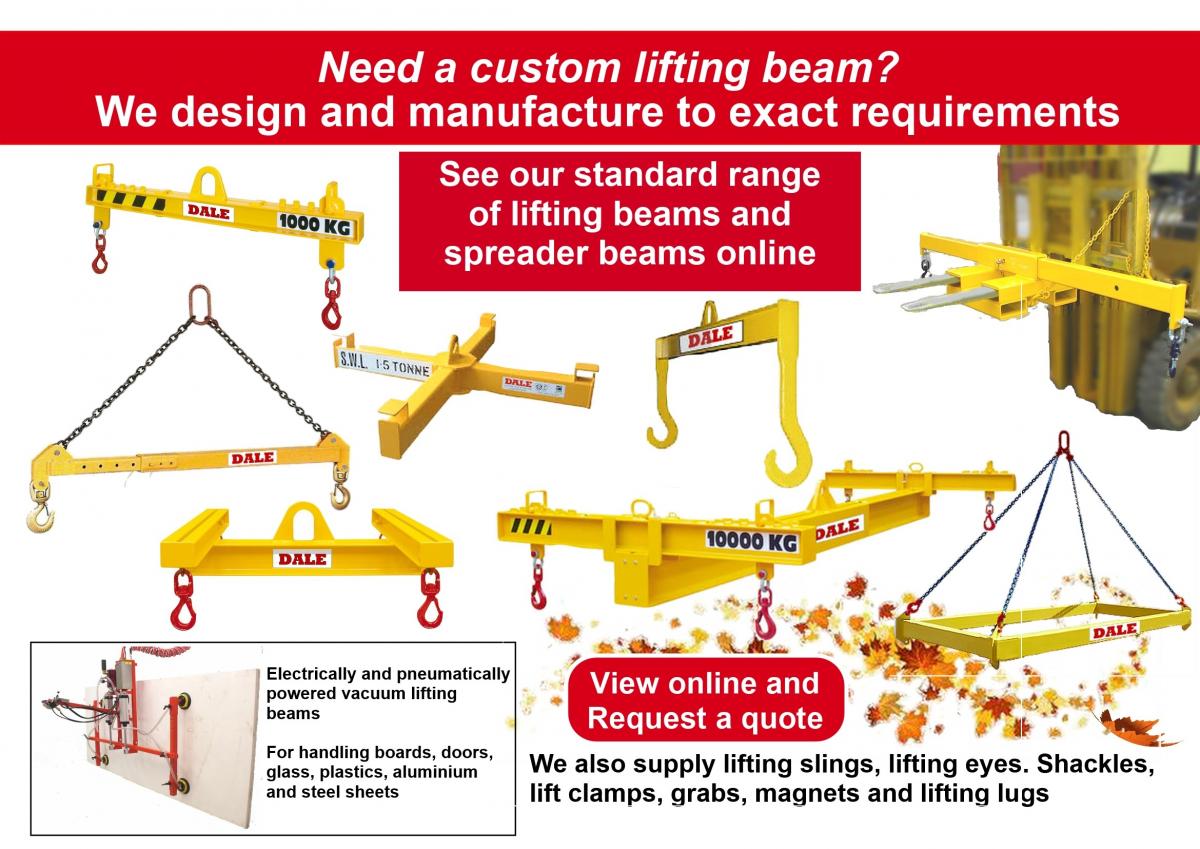Deciding whether to use a lifting beam or spreader beam for a particular lift is an important consideration. Here we try to highlight the differences.
A lifting beam is loaded in bending. Typically a simple lifting beam will have a single lifting eye above the beam which engages with the lifting machine hook and bottom lifting eyes at points on the underside of the beam to connect to the load. Lifting beams are designed to reduce headroom, provide multiple lifting points, to provide adjustable lifting centres, to handle out of balance loads, to remove or control inward or crushing forces, to allow for special load attachments. · Calculations to be made will include the capacity, both of the overall beam and of the loading of the individual lifting points. · Another important consideration is the centre of gravity of the load to be lifted. Getting the centre of gravity wrong can cause the load to topple over. For more information read our GUIDE TO LIFTING BEAMS AND SPREADERS
A spreader often called a spreader beam, is actually a strut loaded in compression. Typically a simple spreader will have a suspension sling that connects the lifting machine hook to the ends of the spreader which are then connected to the load. This arrangement enables the sling to lift, e.g. A cable reel from its axle whilst preventing the sling legs damaging the drum flanges. Although providing a more stable lift, the main disadvantage of a spreader over a lifting beam is the increased headroom taken up by the top sling. Deciding which to use for the application can require expert knowledge.
The design of modern spreaders is usually much more sophisticated but the principle is the same. In practice a combination of beam and spreader is often used and whilst the terms are often used interchangeably, the equipment itself is not interchangeable. It must be loaded in the manner for which it was designed.
Another variation of the lifting beam is one designed to connect two overhead traveling cranes and provide one or more lifting points. This facilitates tandem lifting. The total lifting capacity can be that of the two cranes less the self-weight of the beam and any allowance for uncertainty in the sharing of the load.
Most lifting beams and spreaders will be designed for specific applications e.g. A lifting beam for use with vacuum pads or lifting magnets to lift long flexible loads which needs support at regular intervals to prevent the load from sagging
Whether it's a Jet Fighter, Luxury Yacht, Printing Press, Museum Exhibit or Rubbish Skip - You will want to do the lift safely! With an in-house design and manufacturing team and currently over 100 years of combined knowledge in the supply of innovative lifting solutions, DLHonline is your one-stop source for all lifting applications.

